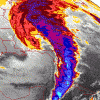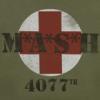
cae
Members-
Posts
1,511 -
Joined
-
Last visited
-
Thanks! The new format takes a bit more time than the old one did, but I think it works better. I'm working on streamlining the process. Sometimes gathering the maps is a good way to make use of the time while waiting for the radar to fill in.
-
I just posted the model discussion write-up. The short story is that the FV3 and 3k NAM did well. My favorite map that I generated is probably this one, showing calculated ratios for yesterday's snow from snowfall analysis and precip analysis.
-
Final thoughts The FV3 might have been the most impressive global model. It and the GGEM were consistently the wettest models, but the FV3 did better than the GGEM at game time. The Euro and ICON eventually caught on, but only very late. Of the mesos, the 3k NAM was probably the best once it got in range. Below is the actual snowfall, compared with the 3k NAM runs from 12z Saturday. Kuchera was similar. However even if you'd looked at the above maps, you might have been surprised by the 1 foot+ numbers that were put in in Central MD. It turns out that area outperformed not just on precip, but on ratios. If you divide the snow analysis by the precip analysis, you can get maps of the ratios. Unfortunately I can only get these for 24 hours at a time. Here's the 1st part of the storm (12z Saturday to 12z Sunday). And here's the 2nd (12z Sunday to 12z Monday). According to those maps, parts of the jackpot zone in central MD saw greater than 15:1 ratios on Sunday. Kuchera was generally more like 11:1. This is one of the limitations of the Kuchera method. I believe it only looks at the maximum column temperatures, and it doesn't consider factors like lift in the dendritic growth zone.
-
I think I've seen worse gradients around here. They're just usually sloped the other way.
-
I agree. We ended up with about 4.5" here. Sure, it would have been nice to have more. But we ended up doing better than I expected just a couple of days ago, and there was plenty of snow for sledding, snowball fights, etc. And everything looks great.
-
I'm in Towson. It looks like I should be on the edge of that band, but there's not a flake in the sky.
-
Heh. I'm inside the beltway, but I'm somehow still in the light green. The HoCo-MoCo death band is for real. 107 pages in the obs thread for this storm and 104 in the model discussion threads. Good ratio.
-
Snowing nicely again here. Biggest flakes of the day. About 4.5".
-
REPS (RGEM ensemble) I added the REPS to this one because I think this was a good example of why a short-range ensemble is useful. At 00z on 1/11, less than 48 hours before snow started falling, the Euro, Ukie, and GFS had DC getting less than 0.3" of precipitation. The wettest global was the GGEM, which showed DC in the 0.4" - 0.6" contour. The RGEM and HRDPS were both out of range, and the NAMs effectively were. This is what the 3k NAM was showing at the time, with precip having moved offshore at the end of the run. But the RGEM ensemble mean put DC in the 0.6" - 0.8" contour, which was even wetter than the GGEM. In retrospect, it was a good sign that this system still had a lot of upside potential. At the time it was an outlier, but it arguably ended up busting low. The below images use the weather.us color scale.
-
HRDPS The HRDPS was similar to the RGEM on this one.
-
RGEM The RGEM did better than most of the globals, but like the GGEM it missed the higher precip totals in central MD.
-
3k NAM The 3k NAM was way off in its early runs, but after it caught on (about 54 hours before the end of the storm) it was arguably the best of the mesoscale models.
-
NAM The long-range NAM was way off, and in the short range it was overdone, but overall it was a signal that some of the globals were too dry.
-
FV3 The best global model overall might have been the FV3. Like the ICON, it looked pretty good at the end, but unlike the ICON it had been fairly consistent. I mentioned above that the Euro was arguably the worst model for the first 24 hours of the storm. The FV3 was arguably the best. Below is the actual precip totals from the first 24 hours followed by the FV3's final 24-hour prediction. Looks good to me.
-
ICON The ICON bounced around a lot but ended up looking pretty good in the end. Arguably the best of the globals at game time.








